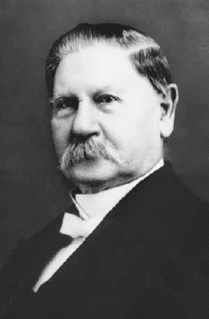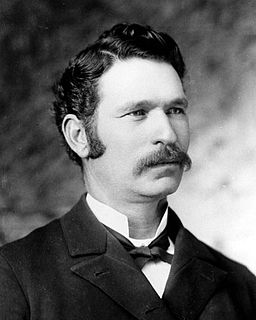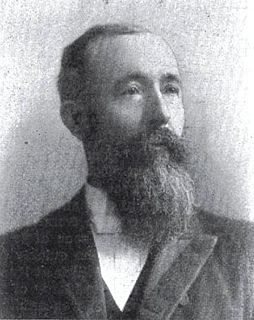Joseph Taylor Bentley (6 March 1906 – 16 June 1993) was the tenth general superintendent of the Young Men's Mutual Improvement Association of The Church of Jesus Christ of Latter-day Saints (LDS Church) from 1958 to 1962.

The Church of Jesus Christ of Latter-day Saints, often informally known as the LDS Church or Mormon Church, is a nontrinitarian, Christian restorationist church that is considered by its members to be the restoration of the original church founded by Jesus Christ. The church is headquartered in Salt Lake City, Utah in the United States, and has established congregations and built temples worldwide. According to the church, it has over 16 million members and 67,000 full-time volunteer missionaries. In 2012, the National Council of Churches ranked the church as the fourth-largest Christian denomination in the United States, with over 6.5 million members reported by the church, as of January 2018. It is the largest denomination in the Latter Day Saint movement founded by Joseph Smith during the period of religious revival known as the Second Great Awakening.
Born in Colonia Juárez, Chihuahua, Mexico, Bentley graduated from Brigham Young University and worked as a teacher and educational administrator in the U.S. state of Utah and Mexico. In 1953, he began teaching in the accounting department at BYU and eventually became an assistant to Ernest L. Wilkinson, the president of the university.

Colonia Juárez is a small town in the northern part of the Mexican state of Chihuahua. Colonia Juárez is located in the valley of the Piedras Verdes River on the western edge of the Chihuahuan Desert and beneath the eastern front of the Sierra Madre Occidental. It is roughly 9 miles (14 km) north of Mata Ortiz and 12 miles (19 km) southeast of Nuevo Casas Grandes. The town had a population of 1,035 in 2010.

Chihuahua, officially the Free and Sovereign State of Chihuahua, is one of the 31 states of Mexico. It is located in Northwestern Mexico and is bordered by the states of Sonora to the west, Sinaloa to the southwest, Durango to the south, and Coahuila to the east. To the north and northeast, it has a long border with the U.S. adjacent to the U.S. states of New Mexico and Texas. Its capital city is Chihuahua City.

Mexico, officially the United Mexican States, is a country in the southern portion of North America. It is bordered to the north by the United States; to the south and west by the Pacific Ocean; to the southeast by Guatemala, Belize, and the Caribbean Sea; and to the east by the Gulf of Mexico. Covering almost 2,000,000 square kilometres (770,000 sq mi), the nation is the fifth largest country in the Americas by total area and the 13th largest independent state in the world. With an estimated population of over 120 million people, the country is the eleventh most populous state and the most populous Spanish-speaking state in the world, while being the second most populous nation in Latin America after Brazil. Mexico is a federation comprising 31 states and Mexico City, a special federal entity that is also the capital city and its most populous city. Other metropolises in the state include Guadalajara, Monterrey, Puebla, Toluca, Tijuana and León.
In 1956, Bentley became the first president of the Northern Mexican Mission of the LDS Church, which was created by dividing the Mexican Mission.
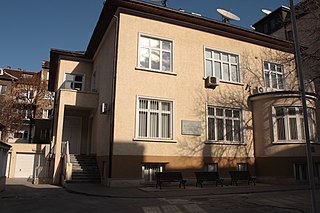
Mission president is a priesthood leadership position in The Church of Jesus Christ of Latter-day Saints. A mission president presides over a mission and the missionaries serving in the mission. Depending on the particular mission, a mission president may also be the presiding priesthood leader of some or all Latter-day Saints within the geographic boundaries of the mission. Mission presidents are ordained high priests of the church.
A mission of The Church of Jesus Christ of Latter-day Saints is a geographical administrative area to which church missionaries are assigned. Almost all areas of the world are within the boundaries of an LDS Church mission, whether or not Mormon missionaries live or proselytize in the area. As of July 2018, there were 407 missions of the LDS Church. On January 2, 2019, the LDS Church announced changes that will close 12 missions through boundary realignments and open up 4 new ones, effective July 1, 2019. When these changes take place, there will be 399 missions of the church.
In 1958, Bentley succeeded Elbert R. Curtis and became general superintendent of the LDS Church's YMMIA. He served for four years, until he was succeeded in 1962 by his first assistant G. Carlos Smith. Bentley's other assistants during his tenure included Carl W. Buehner and future LDS Church apostles Alvin R. Dyer and Marvin J. Ashton.
Elbert Raine Curtis was the ninth general superintendent of the Young Men's Mutual Improvement Association of The Church of Jesus Christ of Latter-day Saints from 1948 to 1958. He was succeeded in the leadership of the YMMIA by Joseph T. Bentley.
George Carlos Smith Jr. was the eleventh general superintendent of the Young Men's Mutual Improvement Association of The Church of Jesus Christ of Latter-day Saints, serving from 1962 to 1969.
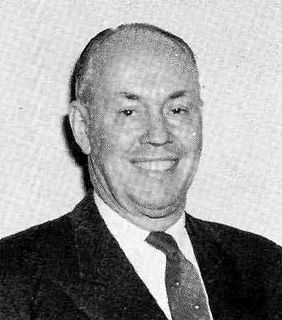
Carl William Buehner was a general authority of The Church of Jesus Christ of Latter-day Saints from 1952 to 1961 and was the Republican Party candidate for governor of Utah in the 1968 election.
In 1972, Bentley was appointed the president of the newly created Argentina East Mission, which was created by dividing Argentina into two missions. In 1976 Bentley was called as first counselor in the Provo Temple presidency. [1]

Argentina, officially the Argentine Republic, is a country located mostly in the southern half of South America. Sharing the bulk of the Southern Cone with Chile to the west, the country is also bordered by Bolivia and Paraguay to the north, Brazil to the northeast, Uruguay and the South Atlantic Ocean to the east, and the Drake Passage to the south. With a mainland area of 2,780,400 km2 (1,073,500 sq mi), Argentina is the eighth-largest country in the world, the fourth largest in the Americas, and the largest Spanish-speaking nation. The sovereign state is subdivided into twenty-three provinces and one autonomous city, Buenos Aires, which is the federal capital of the nation as decided by Congress. The provinces and the capital have their own constitutions, but exist under a federal system. Argentina claims sovereignty over part of Antarctica, the Falkland Islands, and South Georgia and the South Sandwich Islands.
Bentley married to Kathleen Bench in the Salt Lake Temple in 1928. Bench died in 1998, four years after Bentley.

The Salt Lake Temple is a temple of The Church of Jesus Christ of Latter-day Saints located on Temple Square in Salt Lake City, Utah, United States. At 253,015 square feet (23,505.9 m2), it is the largest LDS temple by floor area. Dedicated in 1893, it is the sixth temple completed by the church, requiring 40 years to complete, and the fourth temple built since the Mormon exodus from Nauvoo, Illinois, in 1846.
